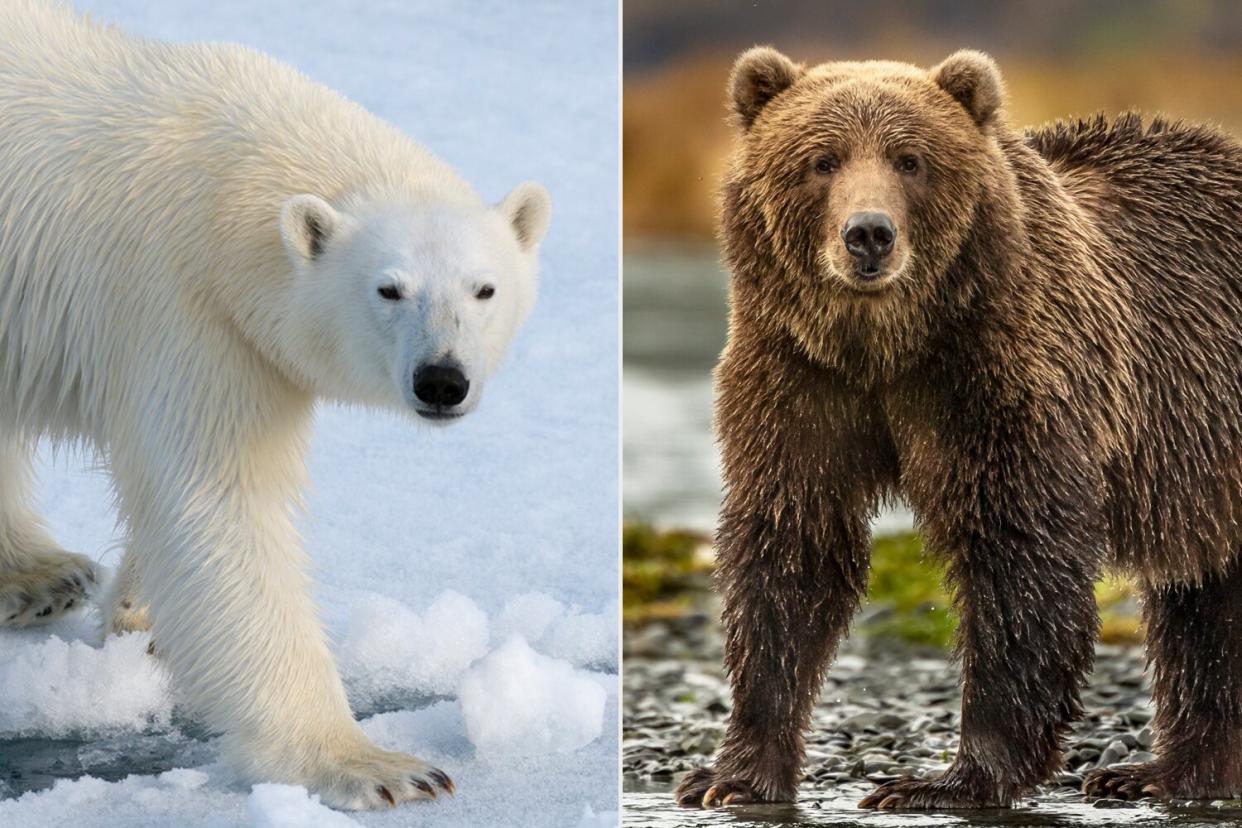Climate Change Could Lead to Increase in 'Pizzly' Bears, a Polar Bear and Grizzly Bear Hybrid

Getty Images(2)
Meet the "pizzly" bear! The animal is a hybrid created by the mating of a grizzly bear and a polar bear — a pairing scientists found could be happening more often due to climate change.
According to Live Science, more polar bears are migrating further south — where they encounter grizzly bears — because rising temperatures have thinned the Arctic sea ice, pushing polar bears into unfamiliar territory.
A new study, published in the Proceedings of the National Academy of Sciences found that climate change's effect on the bear species' habitats has also affected the animals' mating behaviors.
RELATED: Wildlife Photographer Captures Sweet Shots of Polar Bear Families Playing in the Snow
The University of Buffalo researchers behind the study believe that grizzly bears and polar bears could have been mating by chance for thousands of years, but climate change is intensifying the breeding between the species.
The findings "may have implications for our understanding of climate change impacts," the study stated.
The "Pizzly" bear — first spotted in 2006 in the Canadian Arctic — has the "white fur of a polar bear but the long claws, humped back, shallow face and brown patches of a grizzly," according to Live Science.
RELATED: Orphaned Grizzly Bear Moves to Detroit Zoo and Becomes Best Friends with Polar Bear Cub
Charlotte Lindqvist, an associate professor of biological sciences at the University at Buffalo College of Arts and Sciences, told Newsweek that researchers remain uncertain about when grizzly bears — also called brown bears — and polar bears began to interbreed.
"We know they are still able to mate today and can produce fertile offspring so they may have been mating off and on since their species split, whenever the two species came into contact," she said.
Lindqvist added, "The older a mating event is, the more difficult it is for us to find evidence of it in today's populations. However, from our study, we find sharing of DNA with brown bears in modern polar bears and it also involves a 115,000 to a 130,000-year-old polar bear. This suggests mating happened before the age of this ancient polar bear."
RELATED: Blizzard, Beloved Polar Bear at Point Defiance Zoo, Euthanized After 'Rapid Decline' in Health
The number of "pizzly" bears alive today remains low, according to Lindqvist, but there could be more of the hybrid bear species in the future.
Never miss a story — sign up for PEOPLE's free daily newsletter to stay up-to-date on the best of what PEOPLE has to offer, from juicy celebrity news to compelling human interest stories.
"Species evolve all the time and there is nothing to say that new species of bears won't appear in the future, but it will likely not be in our lifetime," the professor explained.
"And it brings up the general issue of what a species really is! What may be more likely to happen, unfortunately, is the demise of the polar bear if it continues to lose its main habitat, the Arctic sea ice," Lindqvist said.

